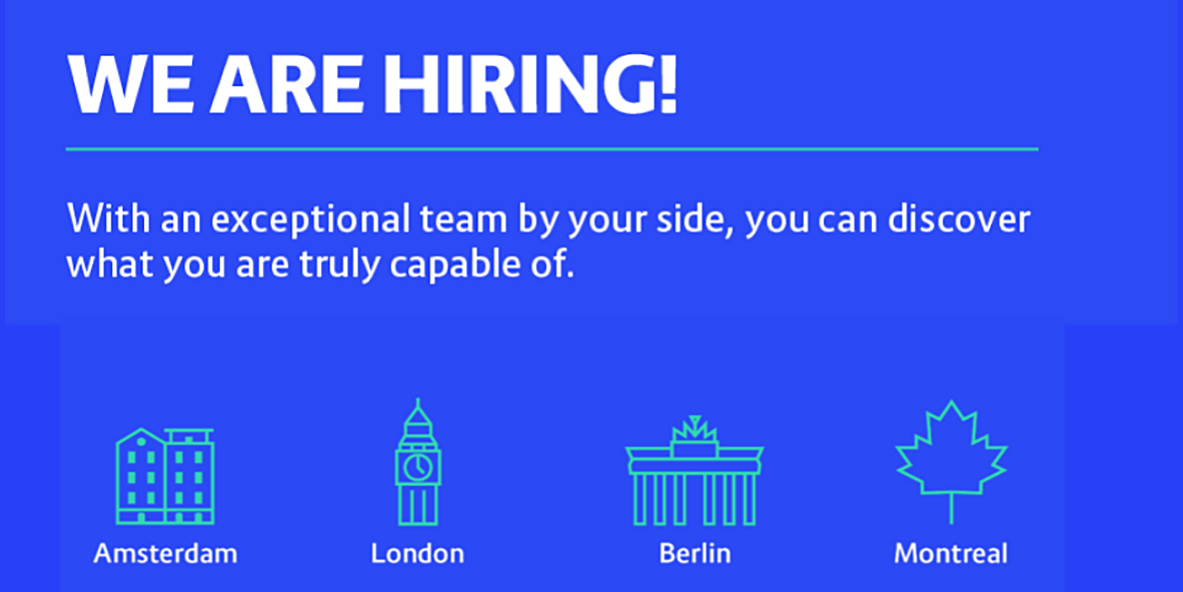As a female engineer, I have had my fair share of struggles and grievances with tech companies and tech events. But now that I am trying to find engineers to hire or speak at conferences myself, I can see that it’s not always so clear cut to do diversity and inclusion properly.

Every tech company under the sun is hiring and looking for talented and passionate engineers. Sixty-seven percent of technology leaders in the 2019 CIO survey by Harvey Nash, an IT recruiter, and KPMG, an auditing firm, said that hiring challenges are hurting their organisations. So if we really don’t have enough engineers to fill jobs, shouldn’t we do everything we can to get more people into the candidate pool?
At Container Solutions, we are working to develop a new generation of Cloud Native leaders, one that’s diverse and amplifies everyone’s voice. We have also recently developed a mission statement for our internal Diversity and Inclusion initiative, which reads, 'We believe each person has a unique strength to contribute to the collective, making it more successful in driving real innovation'.
Here are four ideas to consider when seeking to develop and implement a strategy aimed at increasing diversity and inclusion at your organisation.
1. Act with intention, especially in the beginning.
It’s not intuitive to implement a strategy aimed at diversity and inclusion. When we build our networks, we usually reach for people who are similar to us, who share the same interests or have the same background. This is by definition not diverse.
When we create an opportunity, i.e. an event or a job, we instinctively reach out to our personal network first, effectively excluding many people just because they haven’t met us yet. Acting in an inclusive way requires a lot more effort and is not intuitive until you make it a habit. Then you’ll ask yourself why you ever restricted yourself to such a small group in the first place.
2. Remember: It’s not a funnel problem, it’s a retention problem.
There’s a misconception that women and girls are just not that interested in tech as boys are, by virtue of their biology or gender. But studies have shown that more often than not, women do not go into STEM because of external factors, not because of a lack of interest or inability. (For instance: A 2018 Stanford University study showed that female STEM graduates are treated differently, and are less welcomed, than their male peers at tech-employer recruiting fairs.) Similar barriers apply to other diversity factors, such as race, education, or sexual orientation or identity.
So, the problem isn’t the funnel. The much bigger issue is keeping the people who are already in the industry. The biggest and most obvious culprit: a culture of competitiveness, disrespect, and toxicity that drives out talented people.
Contrary to what many believe, overtly bigoted comments, aren’t the most energy-draining challenge for a diverse workforce. It’s the day-to-day, slow drip of constant casual sexism, racism, homophobia, transphobia etc. These add up to a culture and environment that generally feels unsafe, especially to people who already feel vulnerable, due to their identity and experiences. Stop 'locker-room talk' immediately and communicate that this behaviour is not tolerated.
3. When you notice your lack of diversity, it’s already too late.
Most companies or event organisers are first confronted with the lack of diversity when they want something from a community, such as hiring for a role or looking for speakers. They then try to get more underrepresented people into this particular space by going on the lookout to specifically find an engineer or speaker who belongs to an underrepresented minority. This might help your visual, but does not solve the problem and might even be counterproductive.
As an engineer who is female, I find myself in a rare position, sometimes I am personally invited to speak at an event because the lineup of presenters lacks diversity. On the one hand, of course I am happy to get this opportunity. On the other hand it doesn’t feel right, because I know it's not my engineering knowledge alone that earned me the chance to speak, which just plays into the hands of bigots who will take this as an example that a woman cannot be chosen to present at a tech event on merit.
Instead, you need to start diversifying your community way before you want something from them, so when the time comes, the number of diverse job applicants or speakers will be a natural and authentic reflection of the community.
Something we highly recommend is to get involved with Global Diversity CfP Day, a one-day workshop that is explicitly aimed at underrepresented and marginalised people to help them with their first conference talk. We have been running it in our Amsterdam office for the last two years and it is immensely gratifying to help and encourage diverse new speakers to share their unique stories and perspectives.
4. Nothing will replace getting involved with a personal touch.
Ultimately, people look for safety and trust. So if you really want to improve diversity and inclusion in your community or organisation, you’ll have to get involved as a person, not just as a role.
We try to attend events aimed at underrepresented or marginalised people in tech. Often, a big percentage of attendants are people who are looking to change careers, who have done some basic training or a boot camp and are trying to get their foot into the door of the industry. This is a great resource to find out how you can help to get diverse and driven people into the industry with just a little bit of investment.
Reach out to groups specifically aimed at underrepresented people in tech and actually go to their events. Contrary to popular belief they are open for everyone, but if you decide to go, keep in mind that these events are specifically to showcase their perspectives, experiences, and struggles. These events are about them, not about you. Invest your time and effort into empowering people from diverse backgrounds. Make yourself known as someone who is trustworthy and authentic, and people will remember you.
Photo by Nathan Dumlao on Unsplash



 Previous article
Previous article
